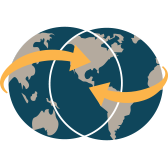Maria Snegovaya – 6.15.17
Riot policemen brutally arresting young people for singing Russia’s national anthem in central Moscow during Russia Day celebrations: this is the picture of contemporary Russia.
The students were arrested as part of the police crackdown on opposition protests June 12. On that day, tens of thousands of demonstrators took to the streets across the country, called to action by Russia’s opposition leader Aleksei Navalny. The current wave of protests, which began in late March and resurged this week, is the largest Russia has seen since 2011–12. What makes them even more interesting is their nationwide distribution. Back in 2012, protests were generally confined to major Russian cities. This time, opposition leaders managed to engage 187 cities, towns and localities all over Russia, from Vladivostok, through Khabarovsk, Cheboksary, Chelyabinsk, Ufa, Yekaterinburg, Krasnodar, Rostov-on-Don and Kazan, to Moscow. In some places, like Tambov, with its three hundred thousand residents, such rallies had been completely unheard of since the early 1990s.
The size and the scale of the protests are a success for the Russian opposition, particularly its current leader, Aleksei Navalny. This is the second protest in Navalny’s electoral campaign since he announced his decision to run in the 2018 presidential election. The first protest took place on March 26, and was also unprecedented in scope and scale for Russia’s politically lethargic population. By the estimates of the European Parliament, between thirty-three thousand and ninety-three thousand people took part in anti-corruption rallies, marches and demonstrations in over eighty cities across Russia on March 26.
Continue Reading
